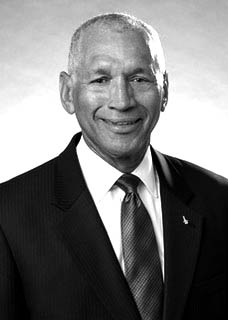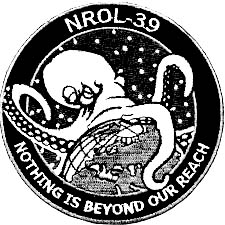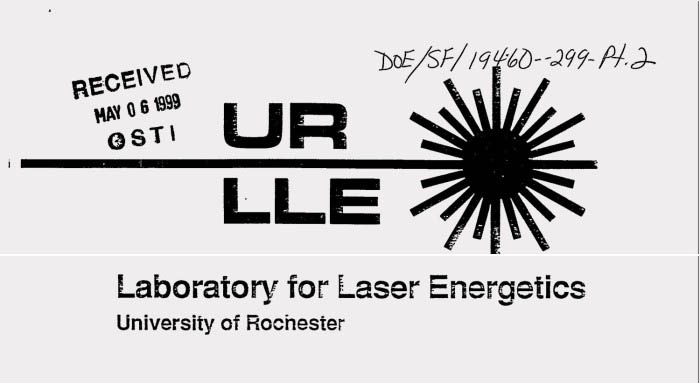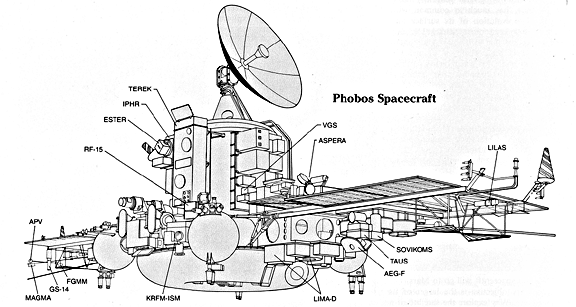
In January of 2011, NASA was contacted by a little known military body called the National Reconnaissance Office or "NRO". The NRO representative nonchalantly informed then head of NASA Major General Charles Frank Bolden, Jr. (USMC-Ret.) that the NRO had two unused earth orbit telescopic satellites, originally built for the Air force, which had been decommissioned before they could be launched and were now sitting decommissioned in a Rochester New York warehouse.

The call became even more bizarre as the representative from the NRO offered both satellites to NASA for free if they could come and pick them up. Curious, and slightly baffled by the mysterious offer, Bolden dispatched some people to make the trip to Rochester and see what the NRO had to offer. What NASA found were two telescopes, each many generations ahead of the Hubble telescope. The difference between the Hubble and the gifted military satellites was that the NRO telescopes, despite having a similar design to Hubble and the same 94-inch diameter primary mirror, had lenses with a much steeper curvature. They also had a much shorter focal length than the Hubble, allowing them to scan a much wider field of vision. Unlike Hubble, they also contained a University of Rochester developed maneuverable secondary mirror for better focus. What the satellites lacked was all of the parts the NRO stripped from them due to national security protocol. The list of removed parts includes all guidance systems, detection equipment, star trackers, prism wheels, filters, optical assemblies, cameras and the other components required for an operational space telescope. NASA's situation was made worse because even if they wanted the telescopes, NASA had just decommissioned the shuttle program and had no way of putting the (maybe, eventually) operational telescopes into space. However, NASA did have plans for Hubble replacements. Sadly most of the plans were nonstarters due to their dwindling budget and laundry list of other projects. The value of a mostly complete space telescope sitting in storage is hard to guess, but NASA officials estimated that having a finished piece of telescope hardware would shave about $250 million off future missions. It could also shorten the timeline for a new telescope project by several years. So it was decided that due to the insulting financial situation NASA found itself in they would take the overly funded shadow military's offer and retrofit the twin telescopes to their own needs.

The NRO was established on August 25, 1960, after the Air Force's satellite reconnaissance program failed to keep up with the Soviets'. The department was designed to consolidate information gathered from multiple departments into one coordinated platform. In 1974 the NRO launched their first telescope satellite, code-named "Key Hole". Keyhole was the result of a surveillance program started during the Eisenhower administration to monitor Soviet weapon and territory expansion. The satellites offered to NASA were likely built by Lockheed for Keyhole's 4th generation of proposed satellites, known as KH-11. The existence of the NRO was declassified on September 18, 1992, by the Deputy Secretary of Defense Donald J. Atwood. The first public acknowledgment of the program was made after A Washington Post article in September 1995 reported that the NRO had quietly hoarded between $1 billion and $1.7 billion in unspent funds. To make matters worse the CIA also sued the NRO for misappropriation of funds. The true mission of the NRO is so buried that even other military groups can't explain what the NRO does outside of being a corrupt Federal organization. Even the NRO can't coherently explain itself. Their website gives this comprehensive description: "Through history, lessons learned, analytical studies, and outreach programs, the Center for the Study of National Reconnaissance supports NRO Leadership and the Intelligence based insight into the discipline of national reconnaissance." The NRO also isn't openly based out of NewYork State so why were the telescopes on the East Coast?

Rochester doesn't seem like the sort of place where high science would be practiced, but if you look closely there are some strange things going on. One of these is the University of Rochester's laboratory of Laser Energetics. This collegiate program is working on using the world's largest private laser (named "Omega") in an attempt to make fusion based free energy. This program explicitly deals with focused laser direct-drive approaches toward fusion energy by blasting spherical deuterium-tritium fuel pellets with 60 laser beams, which converge directly on the pellet surface from all directions at once. This causes the pellet to heat and implode, forming plasma. If sufficiently high temperatures and pressures could be confined at the center of the implosion, a thermonuclear burn wave would propagate radially through the entire fuel mass, producing fusion energy yields many times greater than the energy input. This line of research is seemingly unattached to space telescopes. But, Omega does use robotic autonomous functioning mirrors. The exact same sort of mirrors that the NRO telescopes use to correct and adjust vision.

Rochester is also home to Harris Technologies. Harris began in 1895 as a printing press company. By the 1970s Harris became one of the largest and most successful information sending, receiving, and intercepting communication companies in the world. Harris was crucial in the creation of the "Global Positioning Satellite" program. Their involvement in this program helped Harris corner the modern surveillance market. They also own several warehouses in Rochester. In 2011 one of these warehouses housed two secret telescopes. It is easy to discern that Harris created the navigational systems and other hardware that were removed from both telescopes before they were offered to NASA. It should also be noted that almost all of the articles written by the media on this subject mysteriously never mention Harris Technologies. So why did the NRO build these craft and never use them? The most likely short answer is that they became obsolete before construction finished. To get an idea of how a multibillion dollar program could phase itself out before being completed one would have to learn the linage of these craft.

On March 16, 1955 President Eisenhower issued General Operational Requirement No. 80. This document authorized the development of several new systems and organizations, aimed at attaining photographs over Soviet territory. One of the first organizations to gain funding was the CIA, who began operation "Auqatone" which would lead to the development of the U2 spy plane and later "Oxcart"- better known as the SR71 spy plane. The Rand Corporation also received the green light to start "Project Feed Back"; Feedback conceived and launched America's first photo based spy satellite. Monies were also issued to Lockheed, the Glenn L. Martin Co., and RCA under the codename "Pied Piper" in 1955. By July 1956 the development plan for the covert satellite program (also known as the Advanced Reconnaissance System) was renamed "Vanguard" which became America's "official" satellite program. By 1958 the program was restructured and renamed DARPA, or Defense Advanced Research Projects Agency. Under the joint management of the CIA represented by Richard Bissell, Jr. and the USAF, DARPA launched "Project Corona", which was headed by Major General Osmond Ritland. Lockheed would remain as the prime contractor. By the end of the 1960's the US had 16 official intelligence agencies with countless private contractors who had hundreds of sub-contractors working for them. By this point the Military Industrial Complex was in full swing and the very thing its creator Eisenhower had warned about was so large its many factions didn't even know who the others were, or what they were up too. It was this environment that likely allowed the NRO to conceive two cutting edge spy telescopes, built by Lockheed, with technology from the University of Rochester and software from Harris Technologies, only to be rendered obsolete and discarded a year from launch. If you are curious which program leap-frogged the NRO's telescopes I suggest you look into Boeing's X-37 space plane (which, is likeley in orbit as you read this).
On the surface the construction of these satellites is simple enough. The twin satellites were a byproduct of the United States' Cold War paranoia. They were seemingly intended to be tools of the military to research and coordinate operations in real time. But the facts contradict this conclusion. If anything, the more you look into the reconnaissance community the harder it gets to discern what the intended purpose is. The best place to begin unraveling this puzzle is to look at the history and basic physical makeup of the telescopes. They were commissioned by a covert arm of the US military, intent on watching other nations from a safe position. However, space telescopes with lenses of this size aren't good for terrestrial observation. Since we can't really know the exact parameters of the NRO's telescopes I will use their nearest known cousin the Hubble as an example. The Hubble is almost identical to its cousins, down to lens size and probable magnification. The magnification of Hubble is so great and its orbit so fast that it would be a poor observer of Earth at best. The Hubble project's website addresses this issue thus: "The surface of the Earth is whizzing by as Hubble orbits, and the pointing system, designed to track the distant stars, cannot track an object on the Earth. The shortest exposure time on any of the Hubble instruments is 0.1 seconds, and in this time Hubble moves about 700 meters or almost half a mile. So a picture Hubble took of Earth would be all streaks." The NRO likely addressed this issue by adding University of Rochesters extra mirror. Why go through the cost and technical work to make an over-powered space telescope to look at the Earth when something with less power would be able to do the same job? Even if the intent was to use an incredibly over-powered telescope to spy on Earth why build two at the same time for a program that was already using multiple comparable devices for the same purpose? The most probable answer is that you wouldn't. This line of thought leads us to the strange place of imagining that the telescopes were never intended to spy on the United States or its many enemies but, like their dumber cousin the Hubble, they were intended to look into the cosmos.

These craft could have had many different uses beyond observing the earth. Unfortunately there are (intentionally) very few concrete explanations. So, from here forth I will have to offer several probabilities. Some of these I don't believe in, but lacking evidence otherwise, I will place the rational equal to the fantastic probabilities. Please keep in mind that the vague nature of this story leaves speculation open in the broadest sense. Phobos 1 and 2 were unmanned, two stage probes built by the Russian space program and launched in 1998. The publicly declared objective was to explore Mars and its two moons. The two satellites carried radar transmitters, X-ray and alpha-backscatter spectrometer cameras, as well as vaporizing lasers. They also carried a "Hopper" drone that would navigate alien terrain. Both were also overly powered for their tasks. Both Phobos probes carried enough fuel to over-shoot their publicly planned orbit (not a normal thing for space flight since fuel equals weight and weight is mission critical). Oddly enough, both craft disappeared under mysterious circumstances before reaching their objective. It is telling that after the probes "failed their mission" little to no investigation into the loss of two very expensive satellites took place. The failure was quickly declared "computer error" and left at that. It is entirely possible that the probes were never intended to hit their mark. It is also possible that both probes used the Martian gravity well to slingshot somewhere into deep space. After they failed to meet their stated objective, we can only hypothesize what the classified long term mission would have been. Perhaps the Phobos program's failure was a false flag to hide the true intention of the mission?

Perhaps the NRO telescopes were made to track post-Soviet, modern Russian deep space research? There is no documentation that the Soviets ever put a probe beyond the known universe. It is possible that the Phobos program crafts missed their mark on purpose. It is also very likely that the Soviets secretly launched craft into deep space. But, that leads to a different set of queries. All of which beg the question; with the space race and cold war over what would the Soviet and US government be competing for in deep space?
It is my belief that resources are the most likely reason for the telescopes. There are many motivations for space travel. Given Humanity's past, I would rate the discovery and harvesting of resources as the highest probability for the telescopes. Proof of this reasoning is that the very act of constructing and implementing our current (known) space program has already stripped our little rock of an unsustainable amount of resources. A theory first conceived by a 5th-centur BC Greek philosopher named Anaxagoras called "Panspermia" presupposes that asteroids, comets, and other celestial bodies travel the universe spreading life whenever and wherever they go. The possible profit of harvesting these primordial resources is such that two countries have already gone through the expense of landing probes on separate asteroids. The United States first landed a probe on an asteroid in 2001 followed by Japan in 2005 and again in 2018. On the surface this doesn't seem like a strong connection. But if you look at the cost of these projects the view changes. The Apollo program cost $110 billion in 2019 and the single (known) U.S. robot to land on a meteor cost U.S. tax payers $69 billion in current dollars. Considering that NASA's budget is a fraction of the military's covert programs, it would seem logical that the long term return on resource sighting, and eventual harvesting, is well within the military's budget and sadly, would be a logical endeavor for those programs. Given these factors it would not come as a surprise if they were already prospecting resources outside of our planet. If this theory is wrong why would the U.S. military and reconnaissance communities spend billions to look beyond the Earth?
The fossil record puts the Earth long overdue for another mass extinction. Current research indicates that several of the past mass extinctions were the result of a comet or asteroid crashing into the earth. The twin telescopes could simply have been conceived and built as part of NORADS (North American Aerospace Defense Command) Earth defense. The ability to spot, destroy, or deter a large celestial body should be part of safe guarding not only the home land, but the future of an entire species. It would also make sense to hide such a program. If the populace was aware of the actual danger it faced, there is a real chance that it might shift the populace in ways that would break up productive order and slow down the development of the very tools needed to stop such a calamity. At best the RNO's satellite program might exist to defend Humanity from the hardest thing to plan for, the unknown. Due to the secrecy of these programs we can only speculate as to what form outside threats to the human race might take.
There are countless documented instances of pilots, Astronauts, and civilians reporting strange aerial phenomenon. Perhaps there is an outside phenomenon that not only the masses but the government are unaware of, that science can't yet explain? These threats could be as straight-forward as solar flares or environmental phenomenon. Knowledge of such phenomena could be hidden to keep the populace from panicking. The telescopes could have been constructed to gain data to plan for and, hopefully, negate these outside anomalies?
Usually I steer away from this train of thought. I find it is Typically used as a catch-all for phenomena that are hard to explain. In general I feel that "Aliens" are often a lazy and romantic answer to complex or abstract mysteries. Hopefully I will someday write an article detailing my theories on outside civilizations and the possibility that advanced life would have reason to take an interest in Earth. However, speculation can be made that the government's bloated budget and Cold War paranoia would compel the Powers That Be to look for unrealistic threats instead of contenting themselves with Earth-bound ones. One of the first things you learn as a soldier is to be aware of where your enemy is or could possibly be. Perimeter awareness is often the difference between life and death. Perhaps the military has reason to believe that there is a possible outside force we need to be prepared for? Humans are not only isolated but physically and technologically unfit for expansion outside of our planet. It would stand to reason that an organization, properly educated in preemptive warfare and threat assessment, would push to gather all of the data possible if there was even the slightest sign of an outside, or unknown, hostile force. This scenario could be used to justify tanking trillions of dollars into a program that seemingly has no use. Or, perhaps the program continues on in secret because it always has?
-- Arthur B. Alexi